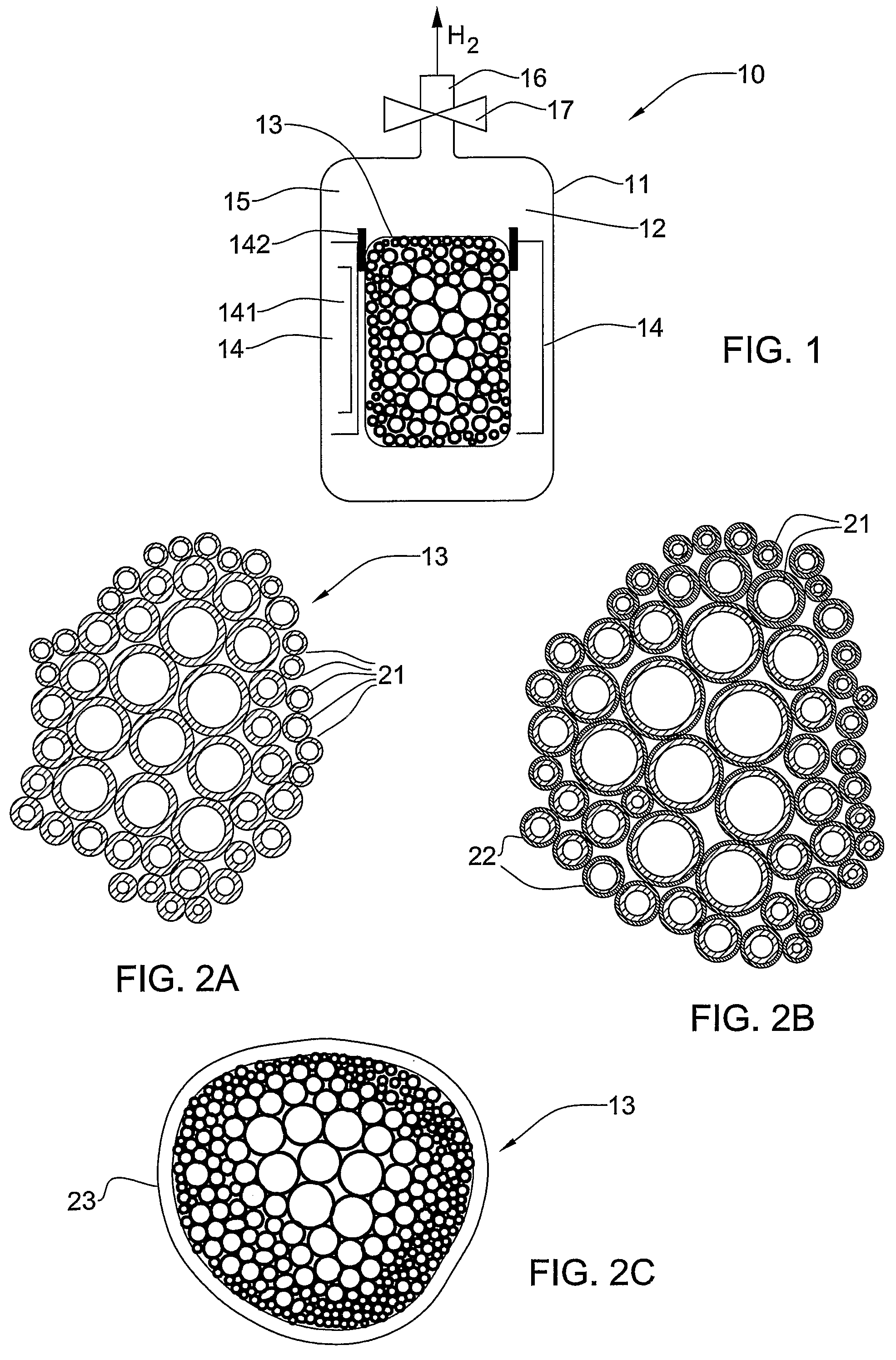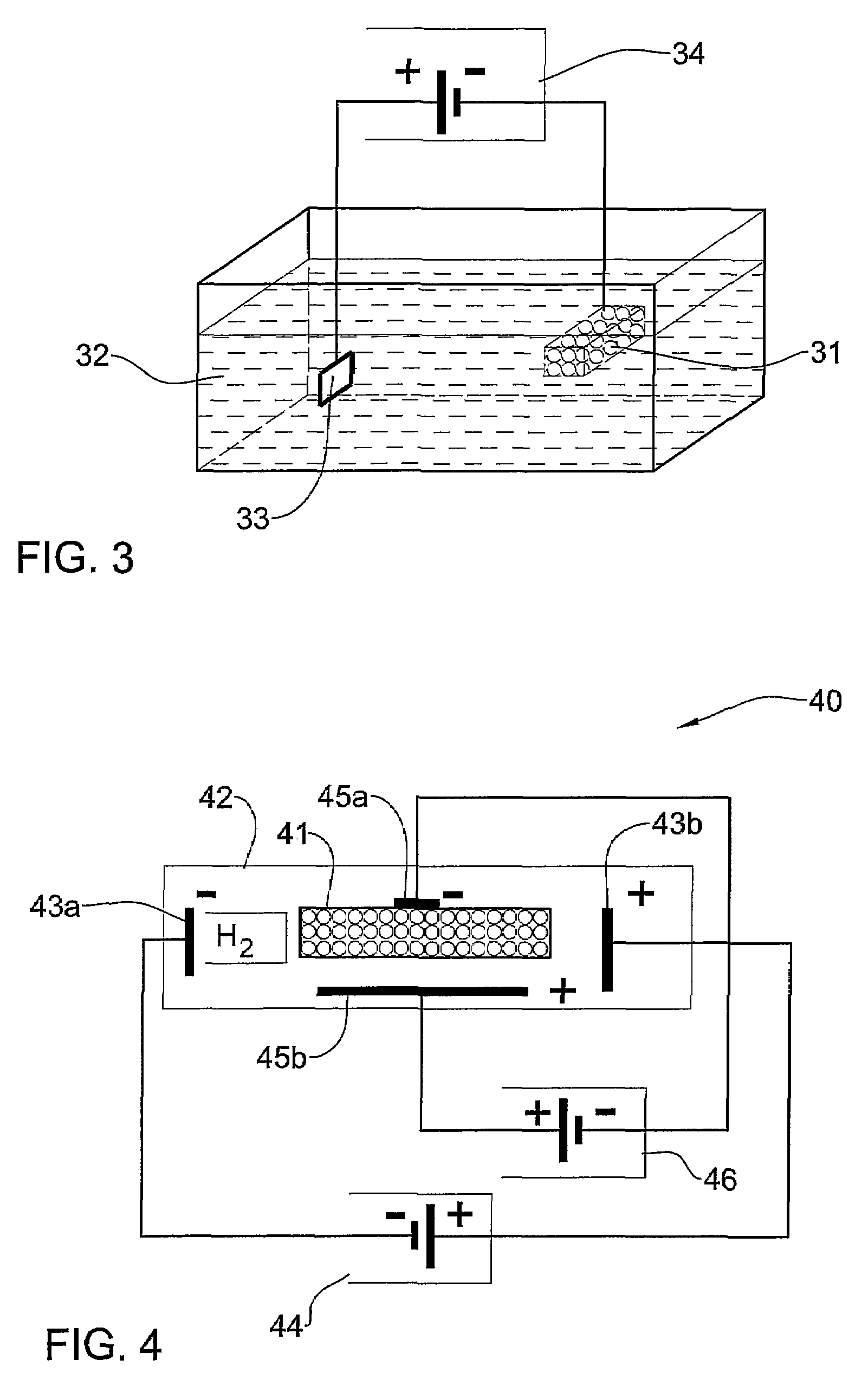Tank and material for storage of hydrogen gas
a hydrogen gas and tank technology, applied in the field of fuel storage, can solve the problems of high heat consumption, high loss of hydrogen evaporation, and time-consuming to start working, and achieve the effects of reducing hydrogen gas loss, increasing safety and cost-saving, and high hydrogen weight conten
- Summary
- Abstract
- Description
- Claims
- Application Information
AI Technical Summary
Benefits of technology
Problems solved by technology
Method used
Image
Examples
example 1
[0091]EI-647 steel 10 μm granules of microspheres in the volume of 2 ml were hydrogen-filled at room temperatures in 4% sulfuric acid water solution. Electrolysis proceeded for 1 hour with electrode potential 2V higher than water decomposition potential. Once the process was completed, granules were washed with desalted water and air-dried at room temperatures.
[0092]To calculate the hydrogen accumulated, granules were placed into a sealed pressure gauge-equipped vial. Granules were heated up to 300° C., following which they were cooled down to room temperatures, with hydrogen pressure measured in the vial. According to the measurements and calculations, 2400 ml hydrogen were released from 1 ml microspheres, which is close to nominal value and matches to 6000 atm hydrogen pressure in granules (see Table 5). This is equivalent to hydrogen weight content of 7.1%.
example 2
[0093]A similar test was conducted with 10 μm microspheres made of AT-3 titanium alloy. The hydrogen amount of 1200 ml was released from 1 ml microspheres, which is equivalent to hydrogen weight content of 6.3% w.
example 3
[0094]To facilitate hydrogen saturation of the microspheres, the latter were chemically coated with 0.1 μm layer of palladium. Hydrogen saturation was 3-4 times as intensive as in non-coated microspheres.
[0095]Referring to FIG. 4, a schematic illustration of a system for filling a microspheric material 41 with hydrogen by hydrogen ionization in electric discharge is illustrated. The microspheric material 41 is placed in a sealed vessel 42 made of electrically non-conductive material, such as glass, plastic, ceramic, etc. The vessel 42 is vacuumed, for example, by a vacuum booster pump to remove air, following which it is fed with hydrogen gas to an excess pressure of about 1-1000 atm. The system 40 includes a first pair of electrodes 43a and 43b arranged in the vessel 42 and coupled to a high voltage source (e.g., 10 kV-20 kV) 44. The electrodes 43a and 43b are configured for providing an electric discharge when the high voltage is applied thereto. The electric discharge will bring ...
PUM
| Property | Measurement | Unit |
|---|---|---|
| diameter | aaaaa | aaaaa |
| pressure | aaaaa | aaaaa |
| pressure | aaaaa | aaaaa |
Abstract
Description
Claims
Application Information
 Login to View More
Login to View More - R&D
- Intellectual Property
- Life Sciences
- Materials
- Tech Scout
- Unparalleled Data Quality
- Higher Quality Content
- 60% Fewer Hallucinations
Browse by: Latest US Patents, China's latest patents, Technical Efficacy Thesaurus, Application Domain, Technology Topic, Popular Technical Reports.
© 2025 PatSnap. All rights reserved.Legal|Privacy policy|Modern Slavery Act Transparency Statement|Sitemap|About US| Contact US: help@patsnap.com



